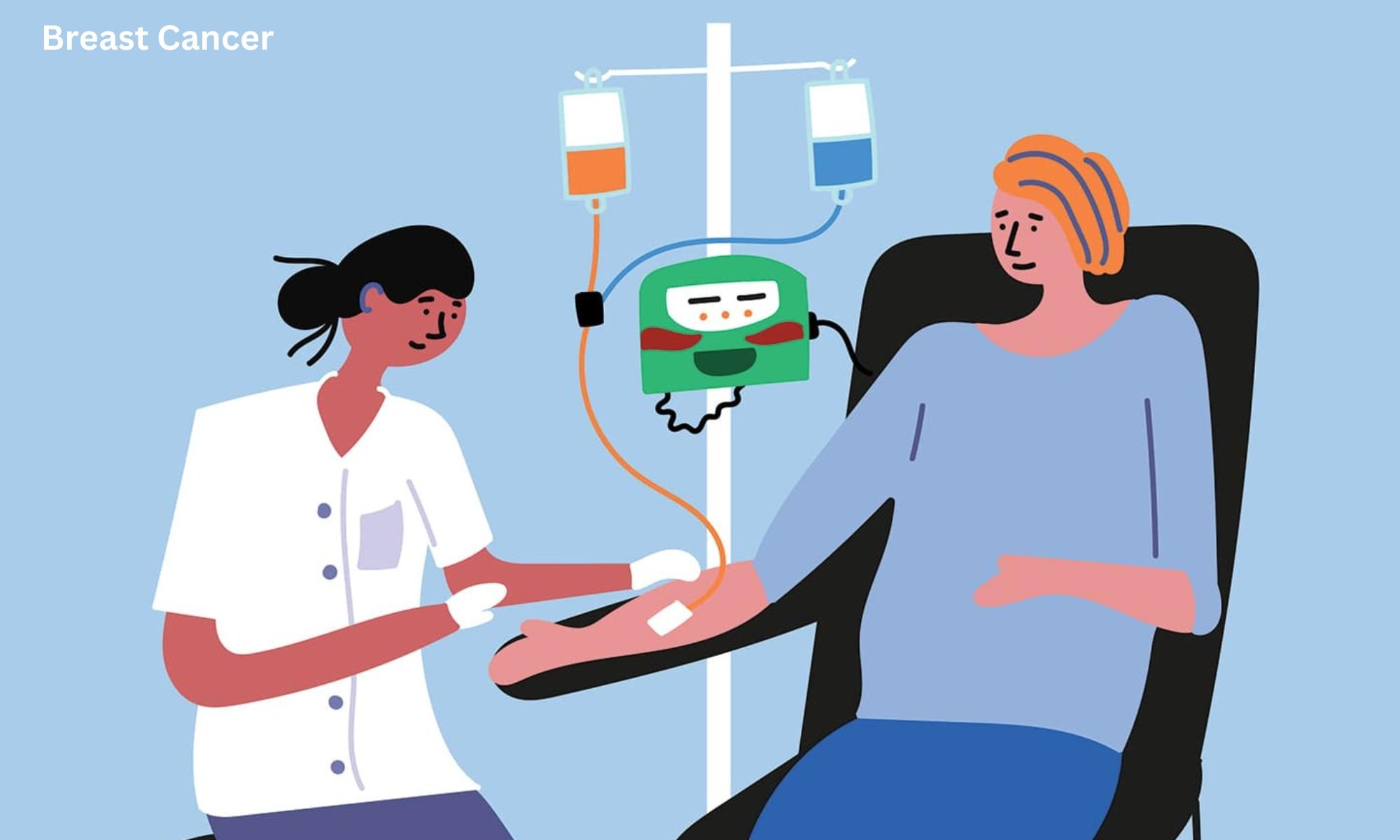BLOG
Chemotherapy for Breast Cancer

Breast cancer is one of the most prevalent cancers affecting women worldwide, with millions of new cases diagnosed each year. While advancements in early detection and treatment have improved survival rates, chemotherapy remains a cornerstone in the management of breast cancer. In this comprehensive guide, we will delve into the intricacies of chemotherapy for breast cancer, exploring its mechanisms, effectiveness, side effects, and recent advancements.
Understanding Breast Cancer
Breast cancer is a complex disease characterized by the uncontrolled growth of abnormal cells in the breast tissue. It can manifest in various forms, including invasive ductal carcinoma, invasive lobular carcinoma, and less common subtypes. Treatment approaches depend on several factors, including the stage, grade, hormone receptor status, and HER2 expression of the tumor.
Role of Chemotherapy in Breast Cancer Treatment
Chemotherapy is a systemic treatment that uses drugs to destroy cancer cells throughout the body. It is often employed as an adjuvant therapy following surgery to eliminate any remaining cancer cells and reduce the risk of recurrence. In cases of locally advanced or metastatic breast cancer, chemotherapy may be used as the primary treatment to shrink tumors and alleviate symptoms.
Types of Chemotherapy Drugs Used

Chemotherapy for breast cancer typically involves a combination of drugs administered either intravenously or orally in cycles lasting several weeks. The choice of chemotherapy regimen depends on various factors, including the tumor's characteristics and the patient's overall health. Commonly used chemotherapy drugs for breast cancer include:
Anthracyclines: Drugs such as doxorubicin and epirubicin are potent anthracyclines commonly used in breast cancer chemotherapy. They work by interfering with DNA replication, leading to the death of rapidly dividing cancer cells.
Taxanes: Taxanes, including paclitaxel and docetaxel, are another class of chemotherapy drugs used in breast cancer treatment. They disrupt cell division by stabilizing microtubules, preventing cancer cells from dividing and proliferating.
Cyclophosphamide: This alkylating agent interferes with DNA synthesis and repair, ultimately causing cancer cell death. Cyclophosphamide is often combined with other chemotherapy drugs to enhance treatment efficacy.
Platinum-based drugs: Drugs such as cisplatin and carboplatin are sometimes used in breast cancer chemotherapy, particularly in cases of triple-negative breast cancer, which lacks hormone receptors and HER2 expression.
Effectiveness of Chemotherapy
Chemotherapy has demonstrated significant efficacy in reducing tumor size, eradicating micrometastases, and improving overall survival rates in breast cancer patients. Adjuvant chemotherapy following surgery has been shown to reduce the risk of disease recurrence and improve long-term outcomes, particularly in high-risk individuals.
In neoadjuvant settings, where chemotherapy is administered before surgery, it can help shrink tumors, making them more amenable to surgical resection. This approach is especially beneficial for locally advanced or inflammatory breast cancer cases where surgery alone may not be sufficient.
Furthermore, chemotherapy plays a crucial role in the management of metastatic breast cancer, aiming to control disease progression, alleviate symptoms, and improve quality of life. While it may not offer a cure in metastatic settings, chemotherapy can prolong survival and provide meaningful palliation.
Side Effects and Management Strategies
Despite its efficacy, chemotherapy is associated with a range of side effects that can significantly impact patients' quality of life. Common side effects include:
- Nausea and vomiting
- Fatigue
- Hair loss
- Bone marrow suppression (leading to anemia, thrombocytopenia, and neutropenia)
- Peripheral neuropathy
- Cognitive dysfunction (often referred to as "chemo brain")
Management of chemotherapy-related side effects involves a multidisciplinary approach aimed at symptom prevention, supportive care, and timely intervention. Antiemetic medications, growth factor support, and psychological support can help alleviate many chemotherapy-associated symptoms, improving patients' overall well-being.
Advancements in Chemotherapy
Ongoing research and clinical trials continue to explore novel chemotherapy agents, combination therapies, and targeted drug delivery systems to enhance treatment outcomes while minimizing toxicity. Personalized medicine approaches, such as genomic profiling and biomarker testing, enable clinicians to tailor chemotherapy regimens to individual patients, maximizing efficacy and minimizing unnecessary side effects.
Furthermore, advancements in supportive care, including antiemetic therapy, growth factor support, and symptom management, have significantly improved patients' tolerance to chemotherapy, allowing for optimal dosing and adherence to treatment protocols.
Conclusion
Chemotherapy remains a vital component of breast cancer treatment, offering significant benefits in terms of tumor control, disease-free survival, and overall survival rates. While associated with various side effects, advancements in supportive care and treatment strategies have mitigated many of these adverse effects, improving patients' quality of life during and after treatment.
As research and clinical trials continue to evolve, the landscape of chemotherapy for breast cancer is poised to undergo further transformation, with a focus on personalized medicine, targeted therapies, and enhanced treatment efficacy. By staying informed and engaged, patients, caregivers, and healthcare providers can navigate the complexities of chemotherapy with confidence, striving for optimal outcomes and improved long-term prognosis in the fight against breast cancer medicine

